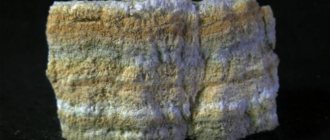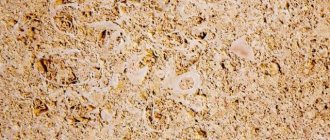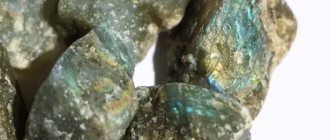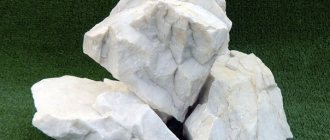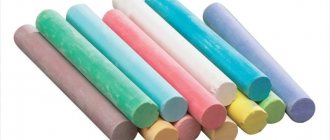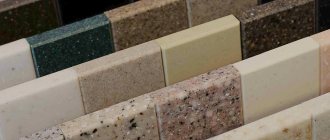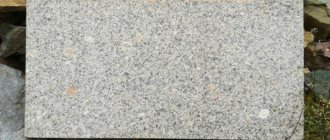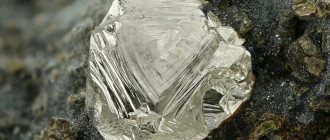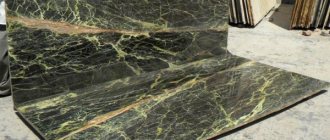Marble is a type of rock that results from the transformation process of dolomite and limestone crystals. It contains many organic substances. This mineral, formed in the depths of the earth, is easily polished and cut with special tools. This quality has allowed the breed to be used in various fields, from the manufacture of crafts, the construction of all kinds of objects, the construction of architectural monuments and ending with art. There are many varieties of natural stone, which directly depend on color and origin. Foreign particles that are present in marble have a direct impact on its color, which is why the material looks different. It owes the presence of a wide variety of patterns to its crystalline structure.
Story
Marble, the so-called "white stone", was found and began to be used in Ancient Greece.
His beauty and physical characteristics captivated people. Due to its strength and ease of processing, it began to be used in the construction of buildings, decoration of temples, palaces, and in the manufacture of wonderful sculptures. They used mainly white or golden-yellow mineral, which made the walls of architectural structures and statues shine and shimmer in the sunlight. If small stones with a beautiful design were found, jewelry was made from them.
Marble - description and physical and chemical characteristics
Origin and description
Marble is a metamorphic type of rock, usually consisting of recrystallized limestone. This is calcite marble. Sometimes it contains impurities of other minerals and organic compounds.
If the rock contains large inclusions of recrystallized dolomite, dolomite marble is formed.
Limestones and dolomites often have an uneven structure and stripes. During the formation of marble, it inherits the texture of these minerals, so the pattern turns out blurry with elongated or rounded spots.
Marbled limestone is sometimes mistaken for marble. The difference is that the latter has a fine-grained structure and may have voids inside. Marble has a coarse-grained structure.
Marble may contain various impurities. The color of the marble stone depends on their type and quantity.
The mineral has a rich color palette - from white to black. Conventionally, it is divided into 2 groups: white marble and colored marble. The latter has many veins.
Formula of marble in chemistry
There is no single formula for this mineral. If the chemical composition of marble is calcite (calcium carbonate), then its formula is CaCO3 (that is, the same as that of limestone).
The structural (graphical) formula of calcium carbonate shows the bonding of atoms within the molecule. It looks like:
If marble is formed as a result of recrystallization of dolomite, its formula will be CaMg( CO3)2 .
Chemical composition of marble
Calcite marble consists of:
- CaCO3 - 95–99 %;
- MgCO3 - up to 4% ;
- traces of iron oxides Fe2O3 and silica SiO2.
Dolomite Marble:
- CaCO3 - 50 %;
- MgCO3 - 35–40 %;
- SiO3 - up to 25% .
Chemical properties
Marble begins to deteriorate if it enters an oxidizing environment.
Under the influence of dilute hydrochloric acid, it boils violently, releasing carbon monoxide.
Marble stone is also susceptible to food acids, so kitchen countertops made from it are impractical.
When heated, it does not emit harmful chemicals.
Physical properties
The porosity of marble is high - 0.6–3.5% , therefore the stone used in finishing the room contributes to a favorable microclimate in it. There is no mold in houses with marble finishing, since the mineral “breathes”.
Viscosity and plasticity do not allow the stone to immediately split upon impact, which is why sculptures and other products are carved from it.
- The density of marble is 2.2–2.6 g /cm3 .
- Hardness - 2.5–3 on the Mohs scale .
- Water absorption - 0,15–0,5 %.
- Abrasion - 0.4–3.2 g /cm2 .
- It usually acquires shine after polishing.
- May be see-through.
Marble is completely safe from an environmental point of view, as it does not absorb radiation and does not emit harmful substances into the air.
This mineral is frost-resistant and is not afraid of strong heating, and has electrical insulating properties.
What is
Marble stone is a coarse-grained rock. This is the final stage of metamorphism of sedimentary carbonates.
That is, the origin of marble is metamorphic. The process took place at average temperatures and pressure. As a result, the sand grains of calcium and magnesium carbonate became larger.
This is how fine-, medium- and coarse-grained rocks were formed. The use of the stone depends on the grain size. Sculptors, for example, need fine-grained marble.
Marble comes in different colors. Some of its types are endowed with natural shine. But after polishing everything shines.
Sometimes the stone is translucent. Such specimens are dismantled by sculptors and decorators.
Place of Birth
Marble is mined in deep mines or developed quarries.
In mineralogy there is no single definition of this stone. The term “marble” refers to all rocks formed from limestone that has been altered by natural forces. There are many such breeds, they are similar to each other, so they are distinguished only by their origin.
Groups by place of production:
- Carrara. The deposit is located in the Alps. Annual production is about 1 million tons .
Carrara marble is one of the most valuable varieties. It was this that Michelangelo used to create his famous sculptures.
- Jurassic is found in Bavaria. This species is denser than others. Shades: reddish, beige, gray-blue. The veins are green or white. The unique pattern of the stone was obtained due to the high percentage of fossils of biological organisms (algae, corals, sponges).
In terms of petrography, it is a marbled limestone because it has a fine-grained structure and contains fossils of organic origin. The name Jurassic marbled limestone, which is used in Russian geology, is more suitable for this mineral.
- Wallenfels is also mined in Bavaria. It has a full range of gray color, white spots, black and white veins.
- Grafenstein. The peculiarity of this reddish-gray marble is that after polishing, a bright, clear pattern with white, blue, gray inclusions and a moiré tint appears on its surface. It is mined in Germany.
- Sayan. Mining is carried out in the Sayan mountain range. The color of the stones is cream, pink, white.
- Ufaleysky is a gray stone with dark veins. Pattern in the form of stripes of gray-blue color. This rock is used as a facing material, and decorative objects are created from it. Place of extraction: Ural.
There are deposits of high-quality marble in Crimea, Transcarpathia, and the Donbass. In Uzbekistan, there are high quality stone samples with unique colors.
White marble is mined in Greece, France, Norway, USA, Cuba, and African countries. Russia also has its deposits, but some of them have not yet been developed.
There are more than twenty large marble deposits in the Urals, but only nine are mined. The deposits contain gray, yellow, black, pink-red marble.
More than fifty deposits have been explored in Western Siberia and Altai, but only three are being developed. White, lilac-pink, gray-flint marble is mined there.
Life time
Marble products are very durable. But their service life depends on the deposit and type of stone. But in any case, the first signs of aging in white marble may appear only after a hundred years, and in colored marble - after 150.
Using marble for monumental sculptures, tombstones, and as a facing building material is a win-win option, since they will last for centuries.
Artificial stone is also durable, easy to use, does not weather or crumble. It not only decorates the walls, but also additionally protects them.
Comparative table of various contaminants and their effects on marble
| Types of pollution | Cast marble | Natural marble |
| Lipstick | no noticeable effect | Faint Spot |
| Red wine | no noticeable effect | Faint Spot |
| Ketchup | no noticeable effect | Etching |
| Vinegar | no noticeable effect | Excessive etching |
| Tea | no noticeable effect | Faint Spot |
| Lemon juice | Very faint spot | Excessive etching |
| Milk | no noticeable effect | no noticeable effect |
| Food colorings | Very faint spot | Gets dirty |
| Liquid shoe polish | no noticeable effect | Very faint spot |
| Beet juice | no noticeable effect | Very faint spot |
| Liquid deodorant | White ring | Etching |
| Coffee | no noticeable effect | no noticeable effect |
| Chrome mercury | Very faint spot | Gets dirty |
| Phosphate trisode | no noticeable effect | no noticeable effect |
| Ethyl alcohol 95% | no noticeable effect | no noticeable effect |
| Ink | no noticeable effect | no noticeable effect |
| Chlorine bleach | no noticeable effect | no noticeable effect |
| Blue | no noticeable effect | no noticeable effect |
| Wax colored chalk | no noticeable effect | no noticeable effect |
| Oil | no noticeable effect | no noticeable effect |
Types of marble
Marble has two types: natural stone and artificial. The natural composition contains various mineral formations, sometimes organic elements are present. Artificial is a mixture of polymers and marble chips.
Color varieties of natural marble
The palette of colors and shades depends on the impurities. The color of most colored marbles is variegated or banded (zipolin). The rock has the following varieties:
- White marble. Has no impurities. Sometimes there are samples with thin colored veins. Sculptural figures and decorative items are made from it. Valued for its beauty and ease of processing.
- Black is a rare rock of volcanic origin. Impurities - graphite and bitumen. Specimens with inclusions of gold are very valuable. They are used to decorate exclusive items and premises.
- Blue, light blue are the main tones of this rock. The color is created by an admixture of diopside. The range of shades is from dark blue to dark purple. Such stones of rich tones look very beautiful.
- Green is highly valued for its original patterns. It is created by white and brown veins running across the entire surface in the form of waves. The green color is created by iron-containing silicates.
- Red. An expensive variety that has received a special color thanks to iron oxide. Temples and palaces were built from this rock in ancient times. Now it is used for finishing columns and walls of rooms.
- Gray - this color is given by impurities of bitumen and graphite. Gamma - from light to dark. Yellowish and pinkish spots are visible. Can be polished and cut.
- The beige color is due to impurities of limonite and manganese elements. The shades are varied: from white to light brown. It has high strength and retains its density for a long time, which is why it is used for the manufacture of floor coverings. The marble patterned floor looks very beautiful.
- Pink. This color is given to the rock by iron oxide. The pattern is created by green veins. Products made from such stone are unique in their elegance.
- Yellow. The bright tone is created by iron carbonates and hydroxides. The pattern is made up of beige streaks and golden lines. Finishing tiles for window sills and countertops are made from this mineral. It is also used for decorative interior items.
- Brown. The color comes from iron impurities, limonite, and manganese inclusions. A light pattern on a dark background looks beautiful.
- Blue-black . This color is colored by highly dispersed iron sulfide. This stone is very rare and therefore highly valued.
The unique and intricate pattern of marble depends not only on the structure of the stone, but also on the directions in which the master cuts the stone. Typically the color and pattern only appear after final polishing.
Artificial (cast) marble
This type of stone, recently invented, is a mixture of various polymers and marble chips. Their ratio is 20 to 80 .
The texture of artificial marble is similar to natural marble, but its physical properties differ:
- The composition of the casting is always homogeneous.
- The specific gravity is almost half that of natural (due to light fillers).
- The artificial one has no porosity at all.
- It is designed for heavy loads, its strength is higher than that of ordinary marble. In case of mechanical damage it is easily restored.
- Easy to process.
- Resistant to acids. Once acid hits an artificial marble slab, it does not lose color or shine.
- Frost-resistant (like natural stone) and heat-resistant.
High decorativeness, a huge variety of colors and patterns, reasonable cost - all this contributes to the fact that cast marble is gradually beginning to replace natural marble on the market.
Strength
Marble is mainly composed of calcite, which has a category three on the hardness scale, so it can be easily scratched with a sharp knife. Fine-grained varieties of marble are the most durable, which is why they are assigned the second category on the strength scale.
Artificial marble is easily restored in case of mechanical damage and is designed to withstand heavy loads.
Comparison of impact resistance of natural and artificial marble
| Impact height (cm) | Artificial marble | Natural marble |
| 2,54 | Very weak mark | 0.16cm dia. notch |
| 5,08 | Weak mark | 0.48cm dia. notch |
| 10,16 | White mark | 0.48cm dia. notch |
| 20,32 | Weak notch | Fault |
| 30,48 | Weak notch | Fault |
| 91,44 | No rift | Fault |
Application of marble
This ornamental stone has long been used in architecture, construction, decorative and applied arts, and the making of sculptures.
In modern construction, marble is not used for cladding external walls, since under the influence of weather conditions it loses its attractiveness (color, shine).
The stone is used in the manufacture of floors, furniture, stairs, fountains, and flowerpots. It is not afraid of exposure to high temperatures, so it is often used for lining fireplaces.
Marble boards are used in electrical engineering.
The mineral is used in jewelry, but only in its natural form, since it cannot be cut. To make the jewelry shine, the craftsman polishes its surface.
Marble chips are used as cladding, concrete filler, and plaster. It is also used for stone mosaics.
Marble flour is used in agriculture.
Medicinal properties
Marble is also used in lithotherapy. Using marble balls, massage is performed to relieve pain from radiculitis, joint diseases, to get rid of nervousness and insomnia.
The stone helps to improve the health of the stomach, cardiovascular and respiratory systems. For this, lithotherapists recommend wearing a pendant, necklace or beads made of marble.
Wearing a ring or bracelet will help reduce the increased excitability of the nervous system and strengthen the nerves. You can wear these products at the same time.
In general, massage with balls and jewelry have a restorative effect and help lift your mood.
Magic properties
Many people know what marble is, but not everyone knows that it is powerful as a magical attribute. Meanwhile, in former times, people believed in the magical power of this stone.
In Ancient Greece it was considered a symbol of love. Temples dedicated to Aphrodite, the goddess of love, were built from it. Marble talismans and amulets, according to the Greeks, preserved the feelings of spouses and strengthened their trust in each other.
In ancient Rome, houses were built from marble slabs so that the stone would not allow dark forces and misfortunes into the houses. To protect against evil and black magic, the Romans wore marble amulets.
In India, it was believed that this mineral could communicate with good spirits protecting the home. In India, it still has a special meaning for people. Every family, even the poorest, usually has at least one marble product, since this stone is considered a companion of goodness.
Nowadays, in order to release the magical power of marble, they wear jewelry with it: rings, bracelets, pendants. Figurines protect your home from negative energy.
The stone quickly adapts to the owner’s energy and begins to have a beneficial effect on his life:
- protects from evil people and dangers;
- promotes friendly relationships in the family;
- helps you gain the trust of others and find your true love.
A marble talisman helps maintain harmony and warmth in relationships with a loved one, eliminate jealousy and mistrust, strengthen family ties, and improve relationships among all household members.
If you use the magical power of marble for so-called love spells (attracting love against a person’s will), you can attract not love, but misfortune.
Marble amulets help people whose activities involve danger (for example, military personnel, rescuers, firefighters).
The stone will also help those who work with visitors, protect them from negative energy, and attract the sympathy and trust of others.
The amulet will give sellers and doctors protection from erroneous actions.
Superstitions
There are many superstitions associated with marble, in particular architectural and construction superstitions. There is an opinion that dark varieties provide better resistance to environmental factors. But, for example, it is not worth building houses in the north from stone that was mined in the south. However, the reality is different. True marbles, regardless of the place of extraction and color, perfectly tolerate both heat and frost.
An example of this is the massive statues made of white Carrara marble, symbolizing the Tiber and Nile rivers, which now adorn the staircase of the municipality in Rome. The sculptures are almost two thousand years old, and besides, they are not in danger for the next few thousand years.
The most famous are Italian white marbles. Yellowish marbles from Greece are also famous everywhere. Significant strata of this rock occur in South Africa and North Africa, in the eastern United States and Eastern Kazakhstan, Armenia and Uzbekistan. In Russia, marble is mined in the Urals and the Far East, in the Krasnoyarsk Territory and Karelia.
Who is suitable according to their zodiac sign?
Marble belongs to the element of Water, therefore it has special compatibility with its zodiac signs: Pisces, Cancer, Scorpio . For people born under these constellations, the stone helps:
- cleanse yourself of accumulated negativity;
- the appearance of vigor and optimism;
- choose the right goal in life and realize it;
- choose the right life partner;
- establish good relations between household members.
According to the horoscope, the mineral is suitable for other zodiac signs. He quickly adapts to the energy of the owner, begins to understand his desires and helps to fulfill them.
Marble objects, talismans, amulets, and jewelry have positive energy and contribute to a good atmosphere around the owner, no matter what zodiac sign he belongs to.
Abrasion
Marble belongs to the third group of abrasion, microcrystalline - to the second. Marble is not suitable as a floor covering in high traffic areas. Because over time, the slabs form depressions in which dirt can collect. If you make a marble staircase in an apartment, it will last more than five hundred years, since it will “lose” only up to 0.02 mm of coating per year.
The surface of artificial marble is covered with a thin layer of liquid glass, which makes it resistant to abrasion.
How to care
In order for marble products to serve for a long time and maintain their beauty, they need to be cleaned regularly.
Rules of care:
- Wipe surfaces with a soft cloth.
- You can polish it at home with suede. Polishes should be labeled “for marble.”
- If you apply a special polish to the surface of the product, it will create a protective film and repel dust.
- White spirit is suitable for getting rid of greasy stains. It must be applied carefully so that a halo of a different color does not appear around the stains.
- If mold appears on the surface of the facing stone due to high humidity, you need to treat it with a low concentration chlorine solution.
To clean marble, do not use metal brushes, vacuum cleaners, abrasives, or acids.
How to distinguish from a fake
Some specimens of jasper and quartzite are similar to natural marble, but differ from it in that they do not react with dilute hydrochloric acid and can scratch glass.
Marble furniture, as well as stairs, floors, and house cladding are in demand. To identify fakes, you need to know the physical properties of this stone and the features of its structure.
- There are no voids or plant residues in marble. If air bubbles and organic fossils are visible on the surface, this indicates a imitation.
- It can shine through 30 cm deep .
- The mineral dissolves rapidly in sulfuric acid. You can break off a piece from a purchased but not yet processed stone and treat it with acid.
Artificial marble differs from natural marble in its uniformity of color and pattern, as well as its resistance to acids.
Price
The cost of products made from high-quality marble is quite high. Price examples:
- tableware (pen, copper clock on a green marble stand) - 38 $;
- table clock in the shape of a heart made of pink marble - 55 $;
- vase (height 42 cm) - 80 $;
- green marble fruit bowl - 930 $;
- candelabra made of marble and bronze - $1,300 per pair ;
- mantel clock made of bronze and marble - 1 900 $.
Natural unprocessed samples, adjacent to other minerals, are also sold. For example, a large fragment of marble on which rock crystal crystals have grown is sold for $35.
Stone cost
The price depends on the type of stone, the complexity of the work, the country of the seller and other factors. In Moscow it is sold at 3,000–50,000 rubles per 1 m2. The most expensive marble is called black monochrome or with golden splashes. The cost of jewelry at fairs starts from 20 euros.
Aesthetes love marble. The stone looks great in all products, impresses with its beauty, and helps create coziness. Pragmatic connoisseurs also note the ease of care and durability.
Have you used marble in interior design or decoration? What do you think about the stone? Write reviews, comment on the article, repost on social networks. Best wishes.
